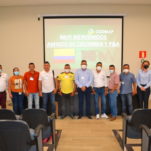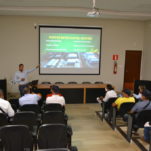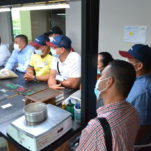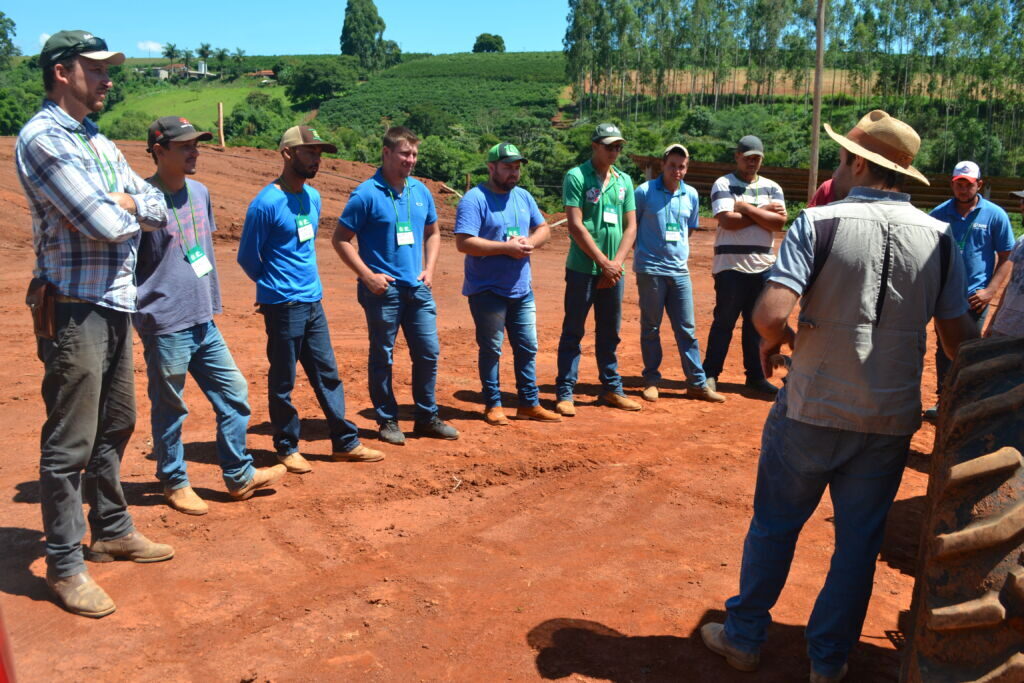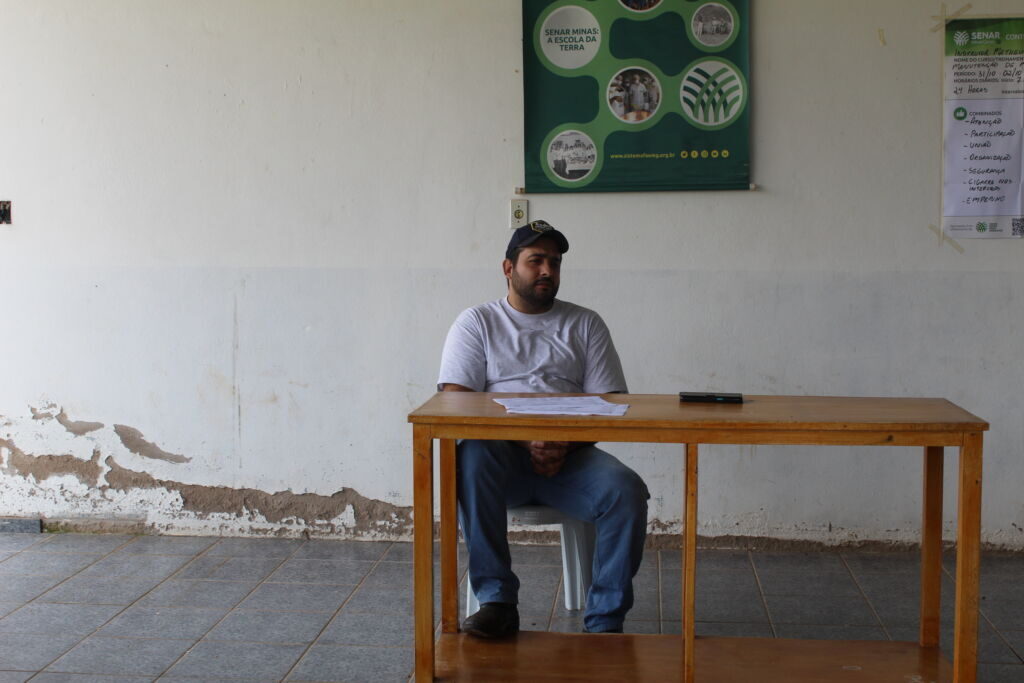On Thursday, March 17th, COOMAP welcomed a delegation from the Huila region, in Colombia, which is the largest coffee producing region in that country. They are from the board and management of Cadefihuila, which is a coffee cooperative, and they came to learn about coffee production process in Brazil. They arrived last Sunday in São Paulo and went to Espírito Santo do Pinhal (SP), where Pinhalense factory is located, which welcomed visitors and promoted visits during this week, to properties and companies in the countryside of São Paulo and Minas Gerais, including COOMAP.
At COOMAP, Colombians arrived at around 10 am and went to the auditorium, where they watched a presentation about COOMAP, given by the Business and Export Manager, Rafael Furtado. Then they visited the Cooperative’ store and warehouse. After lunch, visitors visited the farm that belongs to the cooperative member José Órfão de Oliveira, in order to see the coffee production in detail. Later in the afternoon they returned to Espírito Santo do Pinhal.
COOMAP was the only cooperative included in the Colombians’ itinerary. “The reason is because we are always very well received here, in addition to the partnership between COOMAP and Pinhalense and also because COOMAP has a very well organized structure, in addition to having the complete Pinhalense line. It’s a perfect example that we have to show to foreigners”, said the representative of Pinhalense and translator for the group, Aline Turati.
The head of delegation and general manager of the Colombian cooperative, Fernando Vargas Lopes, said that he had a pleasant impression of COOMAP and that the team was happy for the reception, and for getting to known the organization, its modern facilities and the support that COOMAP gives to the associates, something they’ll take as a reference to their country.
The manager Rafael Furtado reinforced that the visitors were impressed with the organization and professionalism of COOMAP, “in addition to the care we have with the cooperative members, the concern to provide what is best for them and to convert the advantages that cooperativism offers into benefits for producers, something which isn’t usual for visitors”, he concluded.


